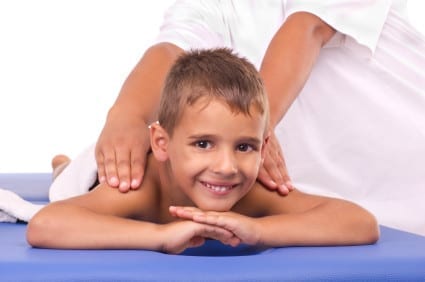More commonly known as pediatric acupuncture, though typically no needles are used and nothing actually penetrates the skin, Shonishin literally translates as sho “little”, ni “children”, and shin “needle”.
Tracing its roots back to 17th century Osaka in Japan (and ultimately to ancient China), this specialized acupuncture technique was developed specifically for infants and children up to the age of seven. Practitioners insist Shonishin offers a viable alternative to pharmaceuticals in the treatment of childhood health problems–everything from behavioral and emotional to many physical conditions. It has been used with some success in treating infants and children afflicted with a wide variety of conditions, including colic, indigestion, GERD, constipation, and diarrhea. It has even shown some success in the treatment of Attention Deficit Hyperactivity Disorder (ADHD), allergies, asthma, eczema, hives, bedwetting, and stuttering. Children as young as one month old have been effectively treated.
The Mechanism of Shonishin in Treating Children
To understand how Shonishin works, one must first realize that a child’s bio-energetic systems are in the “yang” phase and not fully developed, which means their energy (qi) moves very quickly. Due to their rapidly growing bodies, infants consume large amounts of qi. This often depletes the organs most responsible for producing qi, which can result in hyperstimulation and offers a fertile ground for health problems.
Shoshinin’s gentle, mostly non-invasive treatment techniques involve non-inserted needles– the enshin, the teishin and the zanshin. Experienced practitioners rhythmically stroke, rub, tap and press the skin to produce a variety of gentle stimulation sensations. Rounded tools, including rods of stone, shell, silver, or gold, are typically used. Sometimes a press sphere–a tiny round ball–is taped in place and left for a few hours to stimulate an acupuncture point. These techniques serve to harmonize and boost a child’s vital energy.
There are many variables to consider in the application of Shonishin treatment. The frequency, dosage and strength of therapy, for example, will depend on the individual practitioner, as well as the age, health or illness of the child. Keep in mind that a child’s treatments will usually be short in duration, generally taking only one to five minutes-with older children usually requiring longer treatments. Shonishin is administered quickly, usually within 15-20 minutes, and is typically performed with the child clothed or just wearing a diaper. The technique is most effective when given several times per week until the symptoms are alleviated. Once the primary health concern is addressed, treatments may continue on a limited protracted basis to prevent recurrence. While initial treatments are administered only by skilled acupuncturists, many procedures can be performed by the child’s parents at home (a silver teaspoon makes an ideal home-based Shonishin tool). The techniques are quickly and easily learned, allowing parents to perform daily treatments between visits.
Are you interested in becoming a certified acupuncture professional?
Visit the links below to explore our specialized acupuncture programs at a campus near you:
Holistic Benefits of Shonishin for Children
Regardless of treatment type or length, practitioners frequently develop a kind and gentle rapport with the child. In fact, regular Shonishin treatments help strengthen the parent-child relationship and can improve the spiritual and emotional development of the child. Regular daily preventative massage done by the parents may increase circulation of qi and blood, and may strengthen the child’s immune system. The soothing, relaxing massage can also improve sleeping and eating habits. In some cases, Shonishin can even help children to be more sociable and better disposed.
Regardless of your child’s medical condition, Shonishin should only be administered after you have consulted your medical doctor.
Featured Posts:

